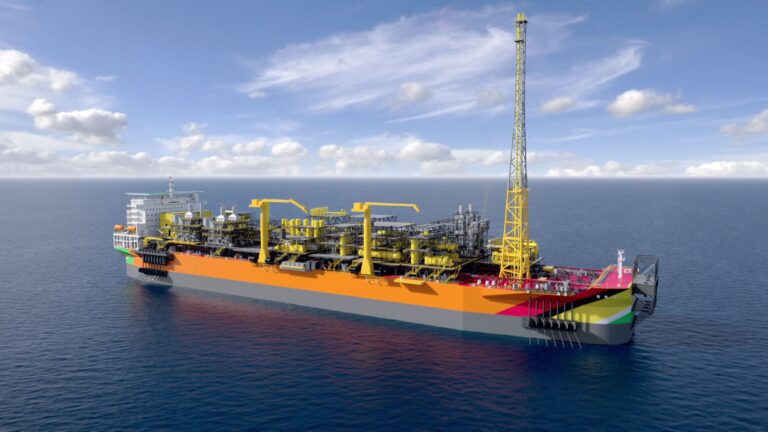
Although not quite as synonymous as the countries of the Middle East, the likes of Venezuela, Brazil and Colombia have long supplied the world’s oil needs. The second world war, in particular, saw the Latin American oil industry become an enthusiastic supplier to the Western powers such that, by 1945, Venezuela had become the world’s 3rd largest oil producer (after USA and Russia).
Tiny Guyana, on South America’s North East coast, played no part in any of these developments. With no oil and gas industry and a population of just 800,000 (less than Glasgow), this sleepy part of the continent was a long way from the hustle and bustle of global energy markets. But all this was to change in 2015, when ExxonMobil struck Black Gold in the Atlantic Ocean, 120 miles off the Guyanese coast.
Stabroek
The Stabroek field stretched over an area of 27,000 sq kilometres and, initially, was thought to hold 2bn barrels of crude. Furthermore, the oil discovered was of the highest quality (“light & sweet”), meaning it would fetch the highest prices at refineries. In one stroke, the fortunes of this English speaking, cricket-mad corner of South America had been transformed.
Today, Stabroek is estimated to hold over 11bn barrels and, by the 2030s, it is estimated that Guyana will become the fourth largest offshore oil producer in the world. The commercial riches of the field are clearly vast.
At today’s oil price ($90 / bbl), the oil field has a value of around $1trn and, with current production levels of 500,000 barrels per day (bpd), it is already generating around $16bn of revenue per annum. Unlike most newly discovered “mega-fields” Stabroek is not state owned (mainly because Guyana never had a state owned oil company) and, instead, is an operating tri-venture between Exxon Mobil (45%), Amerada Hess (30%) and China’s National Offshore Oil Corporation (25%).
With little experience in negotiating oil concessions, Guyana’s Department of Energy nonetheless played a canny hand in its negotiations with these giant multinationals, insisting that, once capital costs have been recovered (over several years), 50% of oil revenues would go into the country’s newly created National Resource Fund (NRF).
National Resource Fund
This fund is already sitting on a $2.4bn pot and in the first quarter of 2024 alone, the NRF was topped up to the tune of $600m in royalty payments (roughly the same amount that the country spends annually on public healthcare). With oil revenues now responsible for 30% of Guyana’s national spending programme, public finances are undergoing seismic changes, whilst the country overall is experiencing astonishing growth.
Traditional unemployment levels in Guyana have been in excess of 15%, the average salary is circa $400 per month, and 48% of the population subsides on less than $5 per day. But last year, GDP growth was 38% and the year before (2022), it was a staggering 62%.
“7.5% OF ADULTS ARE INVOLVED IN AN INDUSTRY THAT DIDN’T EXIST 10 YEARS AGO.”
The IMF is now forecasting that Guyana will be the fastest growing economy in the world for the next 5 years!
In terms of jobs, 8,000 nationals are already directly working for the oil and gas industry and a further 25,000 are indirectly employed by the associated supply- chain and service industries. In themselves, these figures may not seem huge, but with a population of 800,000, it means that 7.5% of adults are involved in an industry that didn’t exist 10 years ago!
Forecasts vary wildly as to how many more jobs will be generated as the oil fields develop, but they will be significant. Ultimately, the exploration, production, transportation, storage, processing and exporting of oil are all physical, actual jobs and it will be a while before AI can do the work of manually moving drill bits from shore to rig!
Pitfalls
The Guyanese people are unsurprisingly excited about their future, but it goes without saying that all kinds of pitfalls lie ahead. Oil prices rise, but almost always spectacularly fall at some point. Demand ebbs and flows with the tide of global consumption and the steady electrification of transport may mean there is less need (or price incentive) to bring the full 11bn barrels out of the ground.
Guyana could also be struck by the “resource curse” that has blighted so many Petrostates, where over reliance on oil production becomes damaging. Such economies grow to be hugely imbalanced, as the oil industry hinders the development of alternative sectors. And when oil prices rise, Petrostate governments are famous for “splashing the cash” and thus stoking inflation, before finding themselves hugely in debt when prices fall.
Often, these countries don’t see their national wealth increase at all and instead end up suffering perpetual economic crises and are left more politically unstable.
The exemplar par excellence of all this is neighbouring Venezuela – once the world’s 3rd largest oil producer (and still the holder of the largest oil reserves), but now confined to producing less than 500,000 bpd for the likes of North Korea and Cuba, via decrepit facilities.
They are watching the developments in Guyana with envious eyes, and have recently renewed their claim on the vast Essequibo region, whose waters conveniently include over half of the new Stabroek Oil Field. They have even hinted at potential military action to reclaim the land, which is as predictable as it is depressing. Where there is oil it seems, there will always be geo-political strife…
Portland
www.stabilityfromvolatility.co.uk
Image courtesy of ExxonMobil


